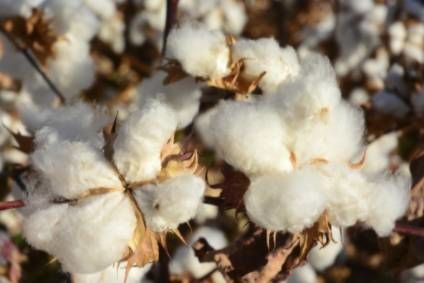With the recent decision by the US to block a shipment of goods from Fast Retailing’s Uniqlo brand over concerns its supply chain has ties to forced labour in China’s Xinjiang province, it is clear that the “red flag” is more than raised, writes MeiLin Wan, VP of textile sales at Applied DNA Sciences.
There have been increasing pressures on cotton supply chains to prove or disprove the use of Xinjiang cotton since the revelation of forced labor. Uniqlo is just one example of the potential risks to brands as well as the manufacturers within their supply chains.
The onus and responsibility fall on the brands to ultimately be certain that the claims they make are consistent with what is happening in their supply chains. How do you prove that the cotton supply chain is using the cotton that is being claimed? How do consumers truly know if a company is taking every ethical and social responsibility measure possible to ensure that the cotton being used is not from areas that utilise forced labour?
What’s behind your cotton?
According to the 2021 Know The Chain Report, forced labour risks are particularly high in cotton sourcing. Work related to the harvesting of raw materials on cotton farms tends to be more remote, meaning that workers are more exposed to vulnerable conditions. Isolated locations may result in fewer visits by labour inspectors and make it more difficult for workers to seek services and report abuse. In addition, due to the seasonal nature of the work, it is often carried out by migrant workers who, for instance, may migrate to a cotton-producing region specifically for the harvest.
China is the world’s second-largest producer of cotton, with 84% of its cotton produced in Xinjiang. Additional recent accounts of forced labour hit mainstream media with recounts in Malaysia, as well as right in our backyard, with a spotlight on the fashion district in Los Angeles. However, Xinjiang continues to be an example of how brand and manufacturer choices can create a ripple effect that reaches wide.
US Customs and Border Protection (CBP) continues to aggressively investigate and prevent goods made by forced labour from entering US commerce. In 2021 alone, the agency targeted 1,255 shipments arriving in the United States that contained more than $765m of goods suspected to be made by forced labour. It detained almost $84m of goods suspected of being made by forced labour in the 623 shipments that applied for entry, and deterred the remainder of the targeted shipments from entering the United States. While the amount of goods suspected to have been sourced from Xinjiang is unclear, these statistics prove the grave situation of forced labour.
Off balance
Since its inception in 2009, the Better Cotton Initiative (BCI) was the gold standard that many brands sought to join as a means to verify and trace their cotton via mass balance certification. However, BCI has recently come under fire after deleting a 2020 allegation regarding forced labour in Xinjiang, a move that officials believe was a succumbing of the organisation to retail member pressures. The group has since gone silent during the most recent backlash.
While it is the obligation of brands to know their own supply chains, many are far removed from the source of their cotton. Due to the volume derived from Xinjiang, a system of “mass balance” has been used to authenticate the cotton. However, the logic for using such a system has come under much scrutiny.
As Leonardo Bonnani, CEO of Sourcemap, so aptly stated: “Mass balance certification blends fair trade with child labour; regenerative agriculture with deforestation…and only a small fraction of the materials certified sustainable are actually audited (typically 1 to 2 percent). But mass balance certification doesn’t require any traceability for the non-certified portion of the raw materials, so it’s impossible to know whether the finished product was made sustainably or using forced labour.”
We believe that this has enabled brands and their supply chains to continue to use paper or transaction certificates to support their product claims. This begs the question: how can we trust that the information being relayed down to the consumer is indeed correct? Is there a more efficient way to trace cotton?
The solution is transparency
Traceability is about being able to know with certainty that the product itself, from source to shelf, has been verified. This means that the fibre, yarn, greige fabric, dyed fabric all the way to the finished good can be and will be authenticated. This provides a direct line of sight from the raw material to the finished goods, and it places the responsibility on each of the participants in the supply chain to assure the quality and integrity of the product.
In recent years molecular taggants such as DNA-based tags have been used to verify cotton and other materials including coffee and wine. The advantage of tagging – as opposed to other chemical markers like isotopes – is that once the material is tagged the signature tag does not change, and is not altered by changes in water, textile chemistries, or the weather.
In order to efficiently “track and trace” cotton through the lifecycle, as materials travel through the supply chain, companies can test these molecular tags to verify the identity of inputs in a finished good, tracking authenticity from origin to retail.
If brands can accurately verify their raw materials to the finished product, then they can say with confidence and scientific proof that they are upholding their social and ethical pledges. Brands who turn to technology solutions like CertainT track-and-trace can be proactive about the information they share, so consumers can make informed choices. By sharing transparency into their supply chains, brands can better educate their customers, protecting both their brand reputation and bottom line.




